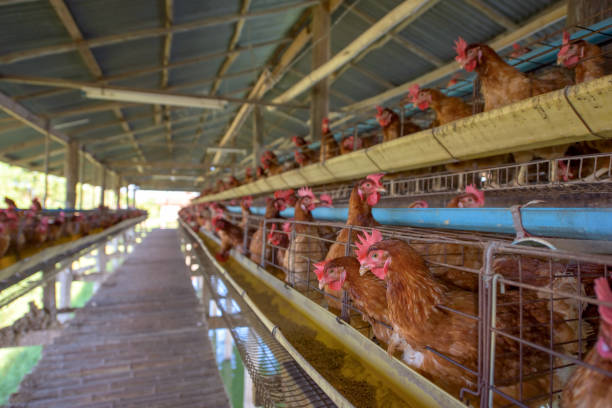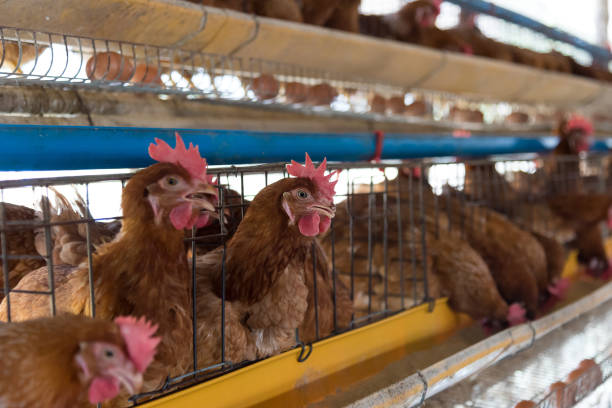Chicken Battery Cages for Sale in Zambia: Increase Your Poultry Yield
Chicken Battery Cages for Sale in Zambia: Increase Your Poultry Yield
For Zambian poultry farmers looking to maximize their egg production and streamline their operations, chicken battery cages represent a significant investment. These cages offer a controlled environment, improved disease management, and efficient use of space, ultimately leading to increased yield and profitability. This article delves into the benefits of utilizing chicken battery cages in Zambia, the different types available, key considerations when purchasing, and how to effectively implement them in your poultry farm.
Understanding Chicken Battery Cages
Chicken battery cages are a housing system designed for laying hens, typically arranged in rows and tiers. Each cage houses several birds, providing them with access to feed and water. The sloping floor design facilitates egg collection, simplifying the process and minimizing egg breakage. These cages are designed to optimize production efficiency and provide a sanitary environment for the birds.
Benefits of Using Chicken Battery Cages in Zambia
Increased Egg Production: Battery cages provide a controlled environment that minimizes stress and competition among hens. This leads to higher egg production rates compared to free-range or deep litter systems. Hens are able to focus their energy on producing eggs, rather than competing for resources or navigating a complex environment.
Improved Space Utilization: Battery cages allow for a higher stocking density, meaning you can house more birds in a smaller area. This is especially beneficial for farmers with limited land or those looking to maximize their production capacity within existing infrastructure. By utilizing vertical space with tiered cage systems, you significantly increase the number of birds you can manage.
Enhanced Disease Control: The cage system reduces the risk of disease outbreaks by minimizing contact between birds and their waste. The elevated cage floors prevent the hens from coming into contact with droppings, reducing the spread of pathogens. Regular cleaning and disinfection are easier to implement in a cage system, further improving hygiene and biosecurity.
Simplified Egg Collection: The sloping floor design of battery cages makes egg collection quick and easy. Eggs roll gently to the front of the cage, where they can be collected without disturbing the hens. This reduces the risk of egg breakage and minimizes labor costs associated with egg collection.
Reduced Feed Wastage: Battery cages are designed to minimize feed wastage. Feeders are typically located within the cage, preventing the hens from scattering feed on the floor. This leads to better feed conversion rates and reduces overall feed costs, a substantial benefit considering feed represents a significant expense in poultry farming.
Better Manure Management: Manure collection is simplified in battery cage systems. Droppings fall through the cage floor onto a collection system, which can be easily cleaned or removed. This improves farm sanitation and reduces the risk of ammonia buildup, which can be harmful to the hens.
Types of Chicken Battery Cages Available in Zambia
The chicken battery cages available in Zambia largely fall into two categories:
A-Frame Cages: These cages are arranged in an A-frame configuration, with the tiers sloping downwards towards the center. A-frame cages are popular due to their simple design, ease of installation, and relatively low cost. They are suitable for small to medium-sized poultry farms.
H-Frame Cages: H-frame cages are arranged in a vertical, multi-tiered structure, resembling the letter “H”. H-frame cages offer even greater space utilization compared to A-frame cages, making them ideal for large-scale poultry operations. They often include automated systems for feeding, watering, and manure removal, further enhancing efficiency.
Within these two main categories, variations exist in terms of cage size, materials used (galvanized steel is common), and the number of tiers. Some cages also come with automated features like automatic feeding and watering systems.
Key Considerations When Purchasing Chicken Battery Cages
Before purchasing chicken battery cages for your Zambian poultry farm, carefully consider these factors:
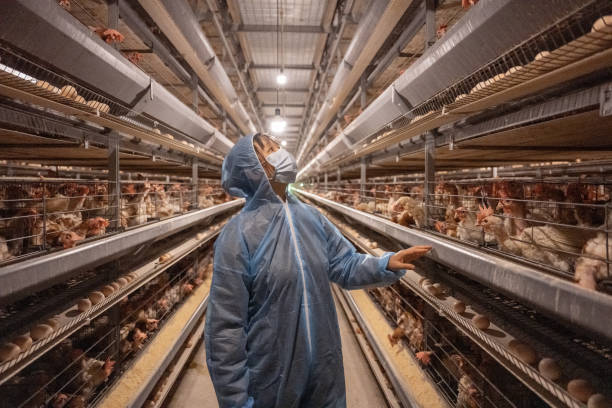
Cage Material and Durability: Opt for cages made from high-quality, galvanized steel. This material is resistant to corrosion and rust, ensuring the longevity of your investment. Look for cages with durable welds and sturdy construction to withstand the daily wear and tear of poultry farming.
Cage Size and Capacity: Choose cages that are appropriately sized for the number of hens you plan to house. Ensure each bird has sufficient space to move comfortably and access feed and water. Overcrowding can lead to stress, reduced egg production, and increased disease susceptibility. Research the recommended space allowance per bird for the specific breed you are raising.
Ventilation and Lighting: Adequate ventilation is crucial for maintaining a healthy environment for your hens. The cage design should allow for proper airflow to remove ammonia and other harmful gases. Consider incorporating lighting systems to regulate the hens’ laying cycle and optimize egg production.
Feeding and Watering Systems: Decide whether you prefer manual or automatic feeding and watering systems. Automatic systems can save time and labor, but they also require a higher initial investment. Ensure the feeders and drinkers are easily accessible to all hens and are designed to minimize feed and water wastage.
Manure Management System: Choose a manure management system that is efficient and hygienic. Consider options such as manure belts, scrapers, or flushing systems. Proper manure management is essential for controlling odors, preventing disease, and maintaining a clean farm environment.
Ease of Assembly and Maintenance: Select cages that are easy to assemble and maintain. Look for designs that are simple to clean and repair. Regularly inspect the cages for any signs of damage or wear and tear, and promptly address any issues to prevent further problems.
Supplier Reputation and Support: Purchase your cages from a reputable supplier with a proven track record of providing quality products and excellent customer service. Choose a supplier who offers warranty on their cages and provides after-sales support, including installation assistance and maintenance advice.
Cost and Return on Investment: Compare prices from different suppliers and carefully evaluate the overall cost of the cage system, including installation, maintenance, and operating costs. Calculate the potential return on investment based on projected egg production, feed costs, and other expenses.
Implementing Chicken Battery Cages in Your Zambian Poultry Farm
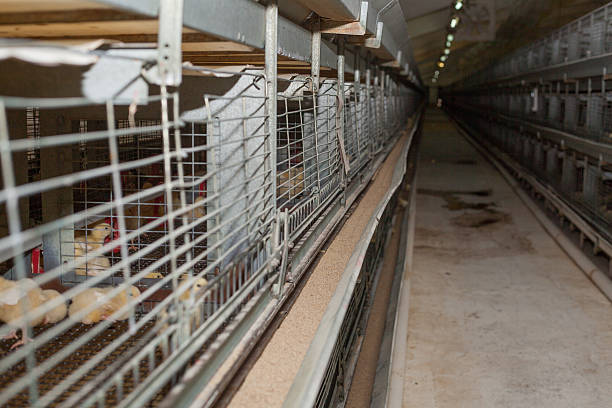
Once you’ve purchased your chicken battery cages, follow these steps to effectively implement them in your poultry farm:
Prepare the Poultry House: Ensure your poultry house is clean, well-ventilated, and properly insulated. Prepare the floor for the cage system, ensuring it is level and can support the weight of the cages and the birds.
Install the Cages: Follow the manufacturer’s instructions for assembling and installing the cages. Ensure the cages are securely mounted and properly aligned.
Install Feeding and Watering Systems: Install the feeding and watering systems according to the manufacturer’s instructions. Check that all components are functioning properly and that the hens have easy access to feed and water.
Introduce the Hens Gradually: Introduce the hens to the cages gradually to minimize stress. Monitor their behavior closely and make any necessary adjustments to the environment to ensure their comfort and well-being.
Maintain a Clean Environment: Regularly clean the cages and the surrounding area to prevent the buildup of manure and other debris. Disinfect the cages regularly to control disease outbreaks.
Monitor Egg Production and Bird Health: Monitor egg production rates and the health of your hens on a daily basis. Address any issues promptly to prevent losses.
Proper Waste Disposal: Implement a proper waste disposal system to effectively manage manure and other waste materials. This will help to protect the environment and prevent the spread of disease.
Addressing Concerns about Battery Cages
While battery cages offer numerous benefits, they also raise concerns about animal welfare. Some critics argue that the confined environment of battery cages restricts the hens’ natural behaviors.
While these concerns are valid, modern battery cage designs often incorporate features that address some of these welfare issues. For example, enriched cages may include perches, scratching areas, and nest boxes to allow hens to express more natural behaviors.
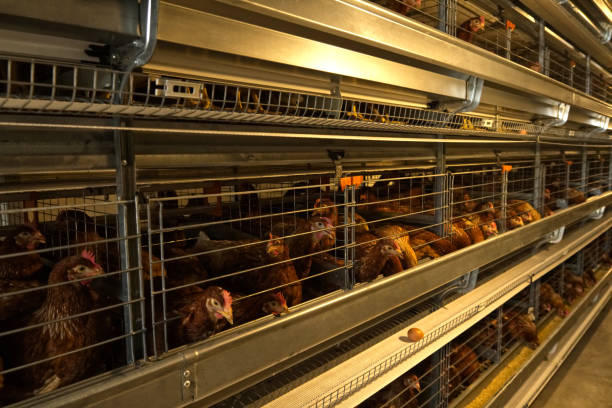
It is important to note that responsible poultry farmers prioritize the well-being of their birds, regardless of the housing system used. Providing proper nutrition, ventilation, and disease management are essential for ensuring the health and welfare of hens in any type of system.
Conclusion
Chicken battery cages can be a valuable tool for Zambian poultry farmers looking to increase egg production, improve efficiency, and enhance disease control. By carefully considering the different types of cages available, choosing a reputable supplier, and implementing best management practices, you can create a successful and profitable poultry operation. While animal welfare concerns should always be taken into account, modern battery cage systems, when managed responsibly, can provide a viable solution for meeting the growing demand for eggs in Zambia. Remember to prioritize the health and well-being of your hens, regardless of the housing system you choose, and consult with experienced poultry professionals to develop a sustainable and ethical farming operation. Ultimately, investing in quality chicken battery cages and implementing sound management practices can lead to a significant increase in your poultry yield and profitability in the Zambian market.



